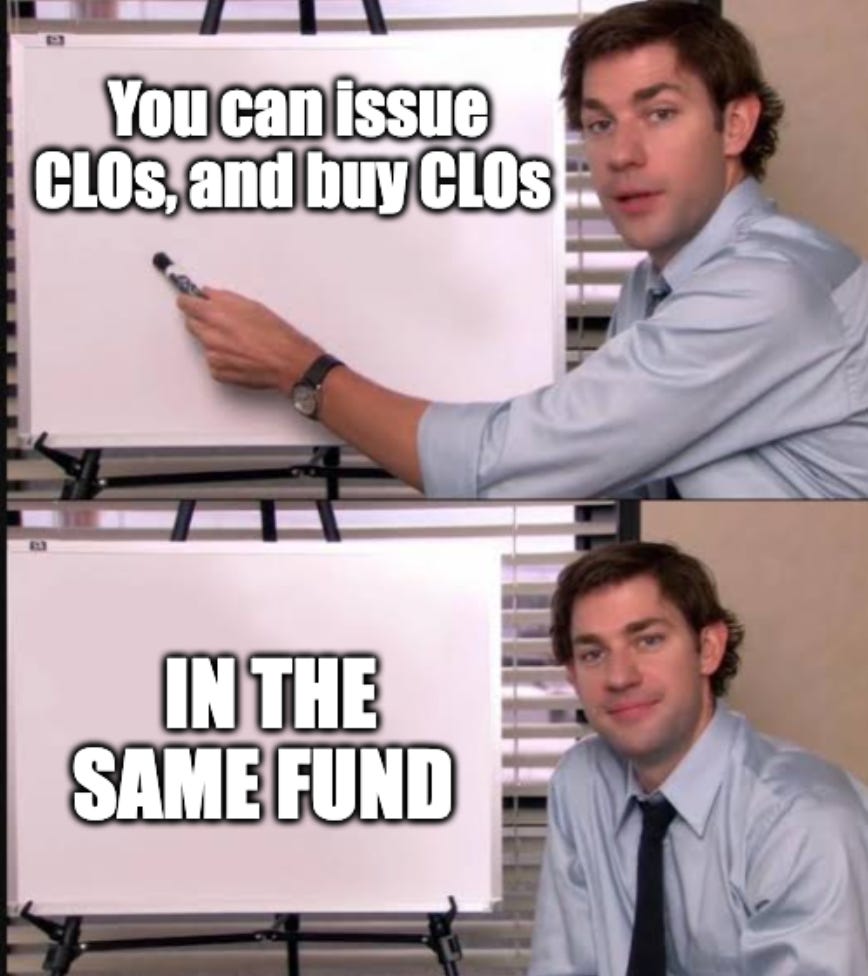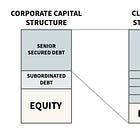Carlyle Credit Solutions Inc.
How one fund plays both sides of the CLO market
CLOs are about to be everywhere in the news, so might as well get ahead of the curve.
Today, we’re looking at a BDC that plays on both sides of the table: it not only invests in third-party CLOs but also issued its own debt securitization, backed by loans from its own portfolio.
Here is a primer on CLOs, if you missed it:
To be clear, CLOs themselves aren’t inherently good or bad: they’re financing tools with clear advantages and some trade-offs. As with most investment structures, the real differentiator is the manager’s skill in structuring and managing them.
Invest in private equity funds? You’ll want to read this case study:
Disclosure: This case study is provided for educational and informational purposes only and should not be construed as investment, legal, tax, or financial advice. The views expressed are solely those of the author. All examples are illustrative in nature and not guarantees of future outcomes. Readers should conduct their own independent research and consult with qualified professionals before making any investment or financial decisions.
Background
Carlyle Credit Solutions, Inc. is a closed-end, externally managed (by a Carlyle subsidiary) BDC with about $2.3B AUM. Since its incorporation in 2017, it has focused on investing in senior secured loans to U.S. middle-market companies backed by private equity sponsors.
From the quarterly statement: “The Company invests primarily in loans to middle market companies whose debt has been rated below investment grade, or would likely be rated below investment grade if it was rated. These securities, which are often referred to as “junk,” have predominately speculative characteristics with respect to the issuer’s capacity to pay interest and repay principal.”
(This ☝️, by the way, applies to all private credit loans).
The Numbers (H1 2025)
(All figures and screenshots of the fund’s financial information have been taken directly from its SEC filings.)
Total Investment Income: $115M (includes $10M of PIK, or payment-in-kind income). Important: PIK in itself isn’t inherently good or bad, it’s simply how some loans are structured (you’ll often see it in industries like software, where borrowers prefer to preserve cash).
What matters is how much of a fund’s income is actually cash vs. accrued, because PIK accrues, but doesn’t hit the bank account immediately:
Total Expenses: $43M (of which $17M went to management and incentive fees)
👩🏫 Quiz of the day (I expect nothing short of greatness):
Proceeds from sale and repayment of investments: $311M
Realized losses on investments: $18M – this means investments sold at lower than book value
Purchase of investments: $644M
Unrealized gains: $14M (see example below)
NAV per share decreased from $19.23 (as of 3/31/25) to $19.10 (as of 6/30/25)
👉 Example: take a look at two loans in the portfolio in the screenshot below. Their fair value is higher than amortized cost. That difference is your unrealized gain:






